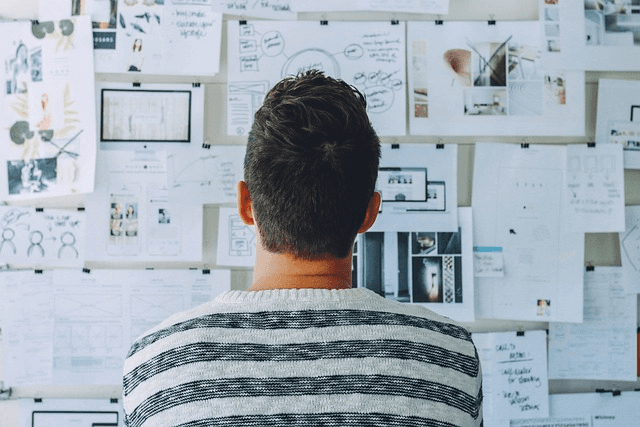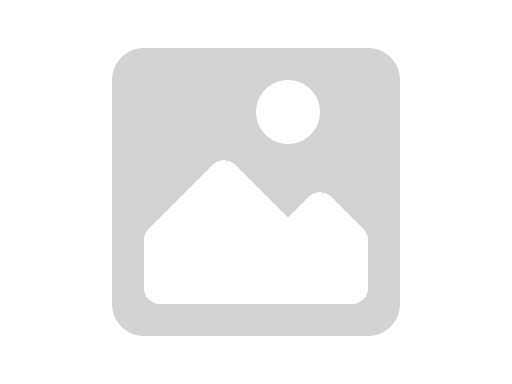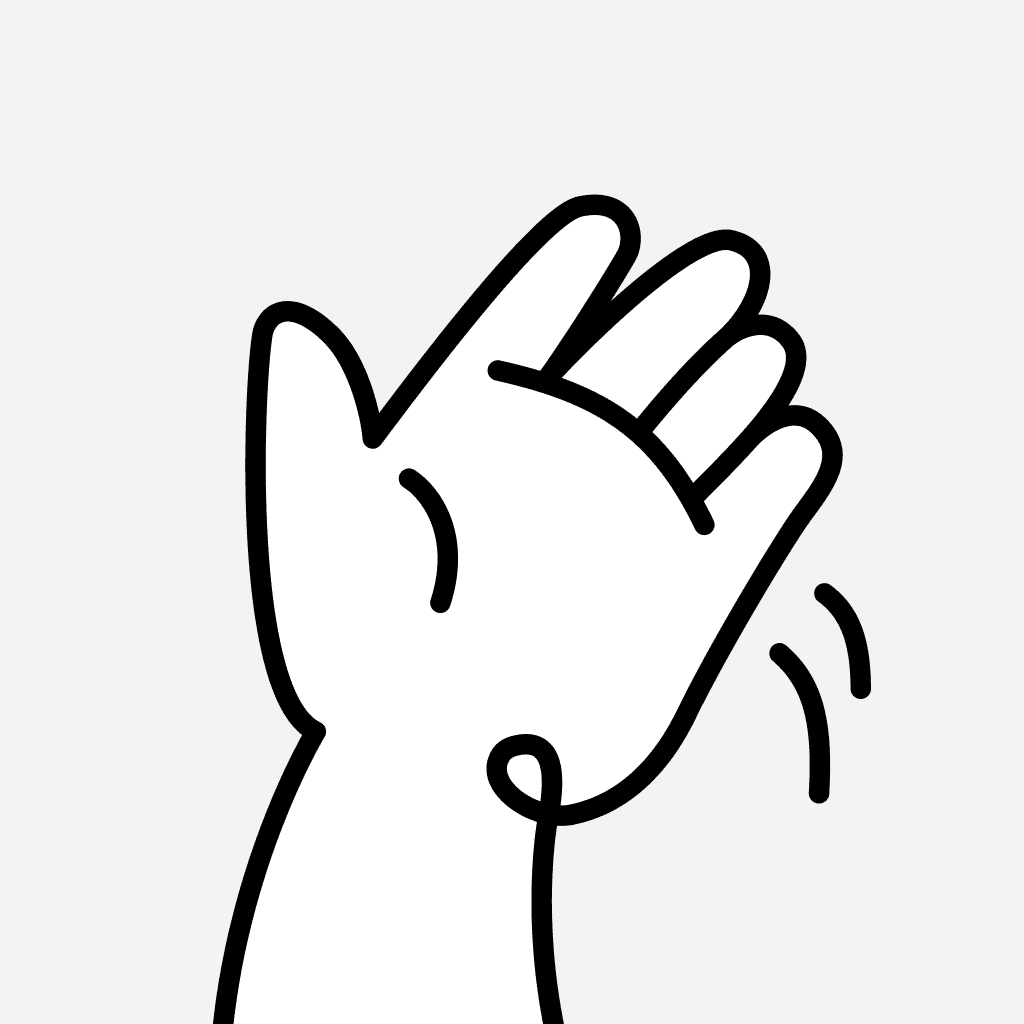Product Design
Baked Studio
03/08/2023
7 minutes
According to Forbes, 90% of digital product startups end up failing. However, the truth is that these startups don't fail solely due to having a terrible idea. Rather, most failures occur because they rush into developing and launching the product without conducting proper research, strategizing, and testing. They invest months in production without considering customer satisfaction.
So, how can you create valuable product for users and align with your business objectives?
The key solution lies in establishing a well-structured product design process that ensures no crucial steps are overlooked (user research, market research, and clear business goals). But how can you achieve that? Start by eliminating unnecessary actions that don't significantly impact the project's success. Instead, focus on the steps that provide real value. Additionally, it's essential to create a process that can be applied consistently across various projects, delivering predictable and favorable outcomes.
Digital Design Process
The process must facilitate the rapid creation of high-fidelity prototypes and their testing with real users. To achieve this, we'll divide the process into three distinct phases that the product design team needs to undergo:
Phase 1: Research and Strategy
Phase 2: User Experience Design
Phase 3: User Interface Design
Phase 1: Research and Strategy
A "good quality product" is not sufficient; we truly need the right final product. To accomplish this, we must gain a deep understanding of the company, its potential customers, competitors, and the overall market. This comprehensive knowledge will guide us in crafting the perfect product that aligns with the needs and demands of our target audience.

Step 1: User Persona
In creating a user persona, we will focus on the essential elements for a clear understanding without unnecessary details. While a broader user persona is valuable, our immediate focus is on segments that offer the most value, with the option to expand later.
User General Information: This includes age, family status, location, and work details, providing a quick snapshot of the individual.
User Goals: Understanding the user's objectives allows us to chart a clear path for the product's development.
User Needs: Identifying the user's essential requirements is crucial in determining the product's key features.
Motivation: By grasping the user's driving factors, we can tailor the experience to align perfectly with their motivations.
Frustrations: Recognizing the user's pain points empowers us to address their concerns effectively, establishing a strong connection with the product.
Step 2: Competitor Analysis
Understanding our competition is crucial in positioning our product effectively within the market. By conducting a thorough analysis of at least three direct competitor companies, we can identify their strengths and weaknesses, enabling us to create a unique selling point and make informed decisions for the future of digital products.
Step 3: Expert Interview
The objective of this step is to extract valuable insights from key individuals closely associated with the business and product. To streamline the process and avoid endless discussions, we rely on prioritization. We engage in constructive discussions, present arguments, and conduct voting to reach decisions promptly. Time limits are set to ensure efficiency.
During this phase, we aim to interview the founder, CEO, marketing, sales, and development teams of successful startup, or any other relevant stakeholders who can provide specific information pertinent to the featured product. Their expertise will help us define essential aspects and guide the project effectively.

Step 4: Strategy
During this stage, we focus on the bigger picture as we make crucial decisions and define key aspects such as company objectives, product goals, and potential challenges. It's crucial step of product design
Goals: Defining clear and tangible goals is our primary task. These well-defined objectives provide a solid foundation for our project.
Challenges: Identifying potential risks and challenges hindering goal achievement allows us to prepare and strategize effectively. Being aware of these challenges helps us develop a better plan to protect against and overcome them, guiding our product development process.
Solutions: Armed with our goals and identified challenges, we create contingency plans to prevent setbacks. These solutions play a pivotal role in mitigating project risks.
Step 5: Journey Map
After gaining a clear direction, it's time to focus on the product itself. For each user persona, we contemplate the best-case scenarios and plan accordingly.
Discover: Understanding how users find our product, whether through advertisements, social media, referrals, or search engines, helps us structure the product's sections and elements to enhance user experience.
Learn: Analyzing how users gather information about our product and its features, such as from website pages or advertisements, allows us to improve presentation and ensure users understand how the product can benefit them.
Use: Gaining insights into how users interact with our product enables us to identify essential elements and functionalities to incorporate.
Goal: Identifying what users aim to achieve by using our product provides valuable input for refining its purpose and value proposition.
Step 6: Features and Functionality
During this phase, we determine the features and functionalities we plan to implement in the long term. Prioritization is crucial measure success, based on an effort-impact scale, constructive discussions, and voting.
Features: Prioritizing features helps us streamline decision-making and achieve a clear vision of what will be included in the initial version and what we will save for future iterations.
Functionalities: For each feature, we focus on the most valuable functionalities that impact user experience and satisfaction.
In summary, we have covered various aspects of product design process:
Identification of our target users
Clarification of long-term company goals
Anticipation of potential challenges and solutions
Understanding of how users will interact with our product
Definition of prioritized features and functionalities for the initial product version.
Phase 2: User Experience Design
In this phase, we transform ideas into tangible product, focusing on functionalities and seamless connections.
Step 1: User Flow
To start, we define what we want to create and test. This can range from simple additions to complex multi-screen flows for new features. Tasks are established for each persona, providing clear starting and completion points. These tasks are derived from the journey map we previously constructed.
Based on the tasks, we create simple action steps, representing screens or buttons that guide users through the entire process together. Each task contains a maximum of six action steps to ensure simplicity and avoid complexity. All stages are connected, providing a clear overview of users' navigation within the product.
Step 2: Wireframes
This step involves actualizing the design maker the product by creating wireframes. Leveraging the user flow's action steps, we determine which screens to create and how they should be interconnected. Additionally, we focus on defining the hierarchy of sections, groups, and buttons to create a comprehensive structure.
Step 3: Testing and Iterations
With the product wireframes complete, we address functionalities and present a clickable prototype to an in-house audience. Testing the prototype is centered around the user flow tasks, enabling us to identify any functionality issues and gather valuable feedback from testers, such as developers and product managers.
Negative comments during testing are embraced, as they offer key insights for improvement. Iterations at this stage efficiently resolve functionality issues without significant time investment. The outcome is a fully functional product prototype with minimal usability concerns.
Phase 3: UI Design
At this point, the product wireframes have undergone thorough testing and improvements, ensuring that all functionalities have been addressed. We are now ready to present the clickable prototype to stakeholders for their review and feedback.
One important piece of advice is to avoid using a currently "live" website or app as the design reference. Instead, the focus should be on creating a new and improved design that elevates the product's overall experience. Trusting in the designer's expertise and vision is essential for crafting a fresh, visually appealing interface that aligns perfectly with the product's goals and user needs. Embracing this approach will lead to a more innovative and successful design outcome.
Step 1: Mood Board
Building a strong and consistent brand is a priority for companies, representing their vision and values. However, when it comes to designing websites, clients often struggle to communicate their ideas, moods, and visions verbally.
To bridge this gap, we utilize mood boards—collections of textures, images, and text styles that serve as visual references for the design style. Creating a mood board allows us to align the new design with the brand, focusing on fonts, colors, buttons, elements, and effects.
We present three options to the client, enabling them to choose one or combine elements from multiple options to create a unique design.
Step 2: Design
With the style defined and wireframes in hand, we can proceed to design impressive interfaces. While a comprehensive product design system may not be feasible for all projects, creating a style guide is essential for maintaining consistency. We can follow web best practices, using tools like ui.shadcn, or Apple's Human Interface Guidelines, but the design principles must not be overlooked as they form the core of all designs.
Step 3: Testing the Interface
After designing the product interface and creating a functional prototype, it's time for real user testing. Careful planning is necessary, including finding users based on personas, selecting appropriate locations, and framing essential questions that lead to user interview.
Testing with five users can resolve approximately 85% of usability issues, making it a valuable step in the process. During testing (for example user interviews), we ask open-ended questions to encourage testers to share their thoughts freely. It is vital to separate the designer from the design during usability testing, as negative feedback is exceptionally valuable in identifying areas for improvement. By prioritizing user feedback, we ensure the final product effectively meets user needs and expectations.
The Outcomes
Throughout the discovery stage of the process, we have accomplished a great deal. We gained a deep understanding of the product from various perspectives, establishing a robust foundation for future designs. Additionally, we created and tested a prototype with real customers, obtaining valuable insights from their feedback.
Armed with a wealth of information, we are ready to make an informed decision. We can confidently progress further and develop the idea into a tangible product or, if necessary, abandon the concept. With this level of understanding, we have the clarity to move forward with certainty.
Product Design Partners for Startups at Baked Studio
Validate Ideas Quickly
At Baked Studio, we understand the importance of validating ideas from as many ideas as quickly as possible, especially when working with startups. As Experience Product Designers, our role is to represent the user's perspective during the design decision-making process.
User research becomes even more critical when collaborating with startups, as mentioned earlier. To ensure an agile and efficient approach, we adopt a nimble and recurrent approach to user research, integrating validation throughout the team and entire design process. This may involve in-house user-testing sessions or quick focus group exercises.
Startups in their early stages often have strong connections with their beta users, providing an excellent opportunity for direct conversations and feedback. By leveraging these relationships, we gain valuable insights from real users, facilitating the rapid validation of ideas and fostering successful design decisions for the product's functionality, behavior, and aesthetics.
Creating a brand and product at the same time
At Baked Studio, we recognize that when collaborating with big companies, our role as designers extends beyond creating product interfaces. It involves understanding the organization's values and beliefs and translating them into meaningful user experiences, shaping their interactions with the brand.
In the dynamic world of startups, brand and product design often evolve simultaneously, leading to a unique and intertwined relationship between design and branding. This bi-directional and collaborative process allows product definitions to influence the brand's identity, and in turn, brand definitions influence key product decisions.
By embracing this integrated approach to design asset creation, we ensure that the brand and product are harmoniously shaped together, resulting in a cohesive and compelling user experience that authentically represents the essence of the organization.
We are ready to change stuff
Preparing for change is essential when collaborating with startups, especially those seeking to disrupt specific markets. Startups often face higher uncertainty regarding their position in the market and how external fluctuations may impact them.
For designers working with startups, flexibility is key. The design process must be adaptable to quickly accommodate changes. It's not uncommon to witness foundational shifts in the product direction midway through the engagement with the startup.
Designers must embrace lean startup with a mindset of agility, ready to navigate unexpected turns. Having alternative versions of the product ready for implementation and thinking beyond the current functionalities are vital practices for designers seeking to add value to startups.
By being open to change and continuously evolving, designers can effectively support startups in their journey to success, helping them navigate uncertainties and capitalize on opportunities in an ever-changing market landscape. That's how product design for startups works
© 2024, Baked Design
Baked with ❤️ and dedication!
